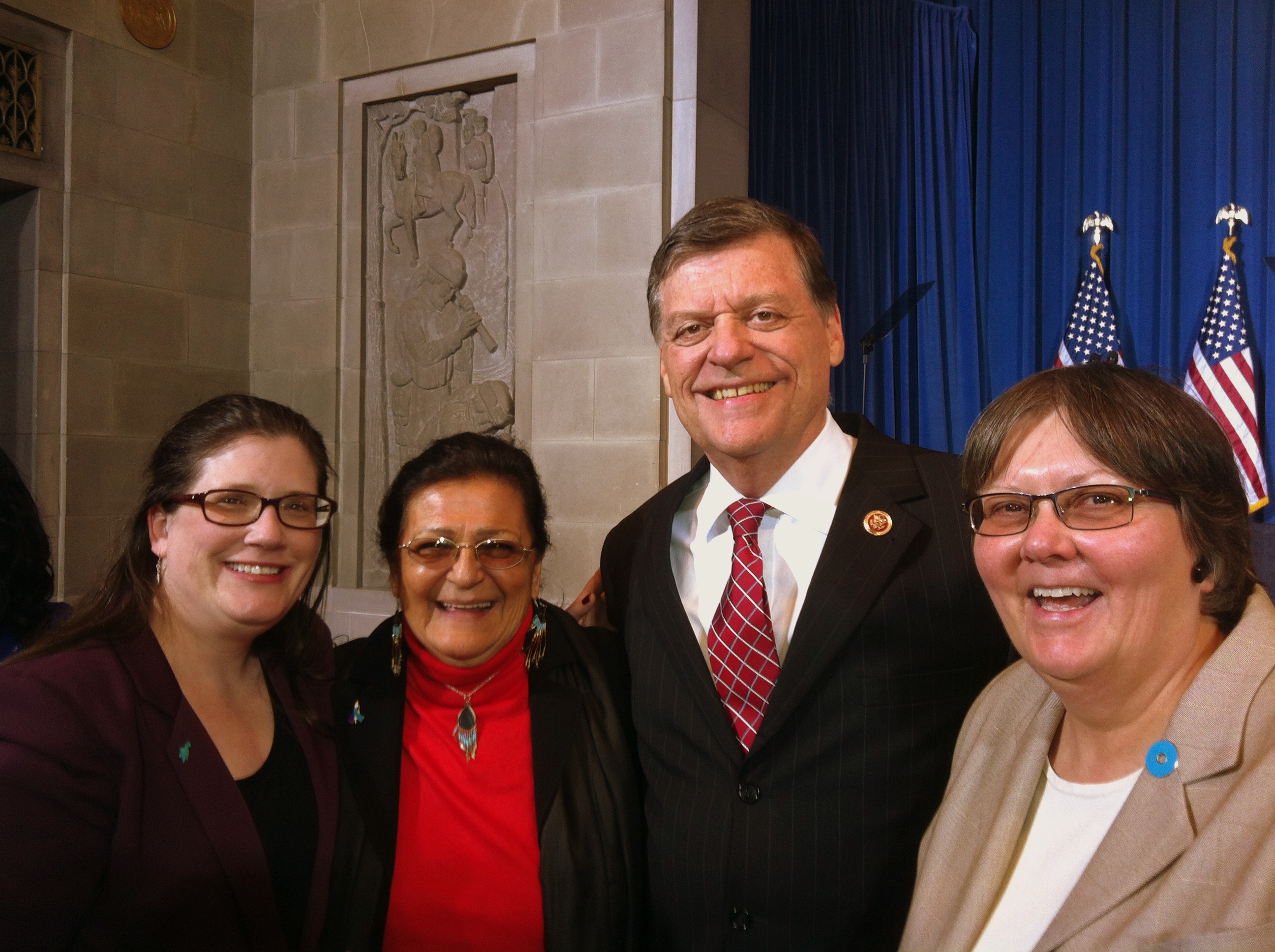
Welcome to Standing Rock Sioux Reservation. This is a sign on one of the border points that indicates you are entering tribal land in North Dakota.
That sign says it all. As you cross this bridge entering tribal land and tribal jurisdiction, this is the only indication you’ll have. While it may seem insignificant to the regular driver cruising U.S. highway 1806, this sign along with many other border points along the Reservation is where the maze of injustice begins for the women of the Standing Rock Sioux Nation.
For the last three years, I’ve been the Amnesty International organizer working in this community in partnership with local Native women to accomplish our Maze of Injustice report goals. As I travel around the Reservation over the next week having meetings and participating in traditional ceremonies, I hope to provide you with a glimpse into the everyday lives of the many survivors, local advocates and tribal leaders who have been instrumental in beginning to stop this cycle of violence against women living here.
Standing Rock Sioux Reservation was one of three Reservations that were examined in the 2006 Amnesty International report “Maze of Injustice: the Failure to Protect Indigenous Women from Sexual Violence in the USA.” According to the report, Native women are 2.5 times more likely to raped or sexually assaulted than any other woman in the USA. Of the women of Standing Rock that I’ve worked with, I haven’t met one who could think of a woman in their community who hadn’t experienced this violence. This is a direct result of a tangled mess of jurisdictional issues, insufficient levels of law enforcement, lack of protocols for handling cases of sexual assault and domestic violence and very few trained Sexual Assault Nurse Examiners (SANEs) available to perform rape kits at the local Indian Health Services hospitals.
While we’ve had many successes here over the last few years, we still have a long way to go. The largest local success being the establishment of the only operational safe house called Pretty Bird Woman House. This is the only shelter serving an area of over one million square miles in either direction located in McLaughlin, SD. In the last year alone, this shelter has seen over 100 women walk through the doors to receive necessary support, counseling and legal advocacy in an effort to bring their perpetrators to justice.
With that, I invite you to stay tuned over the next few days for your very own first eye view of the amazing and courageous women of Standing Rock Reservation. Women, that everyday are faced with the unknown fear of when this will happen to them.


